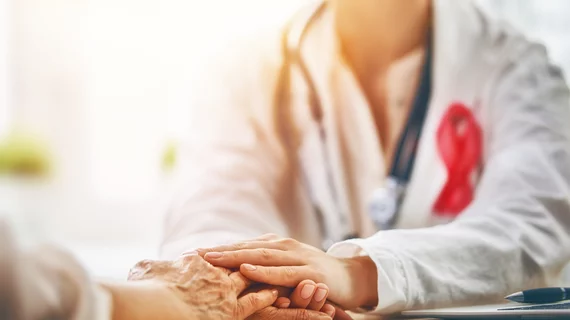More women know about breast density, but socioeconomic disparities still exist—can notification laws change that?
Breast density is a crucial component to the accuracy of a mammogram, and new research suggests more women are aware of this fact than they were only five years ago. Socioeconomic disparities do exist, however, and must be addressed, experts cautioned.
Researchers from the Mayo Clinic found that more than 65% of women had heard of breast density in 2017, compared to 57% of women in 2012. This boost in awareness was not seen in nonwhite women and those with less income and education, the team wrote Nov. 19 in the Journal of the American College of Radiology.
The findings may help standardize the language used in federally mandated breast density notification letters, which imaging facilities are now required to send all women after they receive a mammogram.
“Although prior cross-sectional surveys are informative, no longitudinal survey has yet examined changes in BD (breast density) awareness, knowledge and attitudes over time, which is needed to assess the potential impact of state legislation and guide development of federally mandated BD language,” Deborah J. Rhodes, MD, with Mayo’s Department of Medicine, and colleagues wrote.
For their study, Rhodes et al. surveyed a group of 2,370 women ages 40 to 74 years old. The survey, designed to create a nationally representative picture of the population, was identical in both 2012 and 2017.
Key findings from the survey included:
- Among women aware of breast density in 2017, 76.5% knew of its relationship to masking (the ability of density to hide cancer), compared to 71.5% in 2012.
- Only 47.3% of women with breast density awareness said they had discussed density with a clinician, up from 43.1% in 2012.
- A majority of women (62.7%) surveyed in 2017 wanted to know their breast density, compared to 59.8% in 2012. Most of those women said having such information would make them feel informed, with a minority claiming it would cause them anxiety or confusion.
- Those who live in the 38 states where density legislation has been in place for a full year were more likely to know about density, but not more knowledgeable about masking, nor were they more likely to have discussed density.
- Similar to 2012's results, nonwhite Hispanic women, those with less income and lower education were all less likely to know about breast density when surveyed in 2017.
Despite increased awareness of breast density, one-third of screening-eligible women are still unaware, and important disparities remain, the authors noted. This, they suggested, presents an opportunity for breast density letters to close the knowledge gap.
“These findings indicate support for disclosing individual BD through federal BD notification legislation, which represents an important opportunity to communicate more clearly and consistently the meaning and implications of BD,” the authors concluded.

